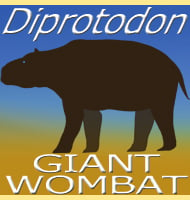Zygomaturus
In Depth A relative of the more famous Diprotodon, Zygomaturus was another of the exceptionally large wombats that once roamed around Australia. As a genus Zygomaturus has been envisioned as preferring to live around waterways such as rivers and lakes where they could browse upon the aquatic plants that grew around the water’s edge. Like … Read more
